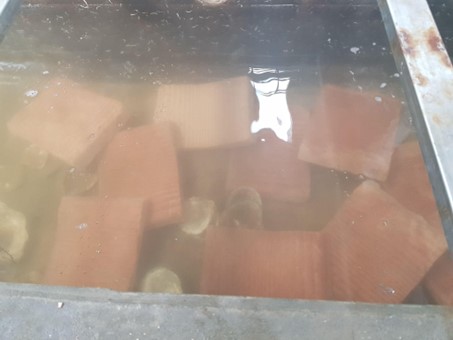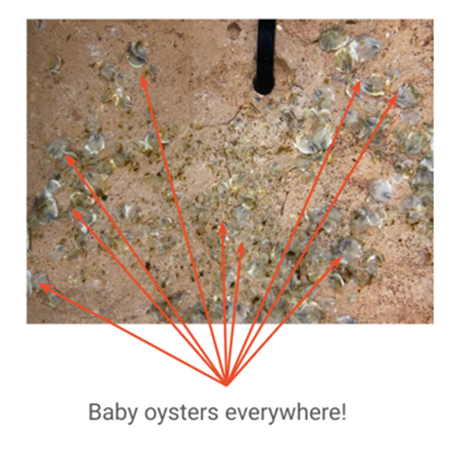Oyster Heaven: Biofilm innovation for oyster reef restoration
Over the past few decades, the use of chemical fertilizers has led to the accumulation of nitrogen and phosphorus in coastal ecosystems. This has resulted in mass phytoplankton production and microalgae blooms that damage the structure and function of these ecosystems, making life difficult for many marine life and ecosystems.
Oyster reefs removes nitrogen naturally from the water acting as natural filters in the ecosystem. Unfortunately, due to overfishing and habitat degradation, native oysters are close to extinction, impacting the environment and the local fishing industry.
Oyster Heaven have an innovative approach to oyster reef restoration that is hoped will change the game for our oceans and marine ecosystems around the world. Oyster Heaven, a marine restoration group received funding through the 2021 Valuing Nature Challenge Fund. This initiative asked organizations to offer creative solutions to making nature protection a more alluring economic pursuit than destruction. Oyster Heaven’s proposal aims to rejuvenate lost oyster reefs in the North Sea by synthetically recreating the biofilm and attractants produced by oyster shells, resulting in improved settlement rates on reef structures, using a sustainable and natural protocol.
Funding helped to support the implementation of a biofilm study. It is believed that the microorganisms in the biofilm emit cues that allow larvae to locate the settlement substrate. By coating the Mother Reef (a low carbon, biodegradable hard substrate specific to oysters developed by Oyster Heaven) with the right biofilm, the organization hopes to facilitate oyster larvae settlement and allow for large-scale restoration.
In the first stage of their research, Oyster Heaven conducted an experiment to investigate the transfer of native biofilm on the substrate. The results
confirmed the transfer of biofilm on the surface of the bricks within 30 minutes of exposure. The biofilm was analyzed, and bacteria from the order Chloroplast were detected, whose role in nitrogen and carbon cycling has been widely documented.
In the second stage, Oyster Heaven worked with the National Institute of Aquatic Resources in Nykøbing Mors, Denmark (DTU Aqua) to study the efficiency of the native biofilm in larval settlement. Unexpected changes in temperatures and tides affected the field experiment, so the organization carried out an experiment at the hatchery under controlled laboratory conditions. The results showed that healthy spats settled on both substrates, confirming that larvae can settle on oyster reefs. These ‘spats on reefs’ were then deployed in the sea with mother reefs and are currently being monitored.
Valuable information and key learnings have been generated from this field study, particularly in verifying that oyster larvae can settle on the Mother Reefs, which will be crucial for future biofilm experiments and pilot projects. However, there are significant challenges that need to be addressed, such as the reliance on environmental conditions for success and the limitation of biofilm formation due to the settlement of other marine species.
After ten months of research and a comprehensive review of previous results, Oyster Heaven is compiling the characterizations of the microflora associated with existing oyster reefs into a manuscript to be submitted for publication by the end of December 2023. 2023 will see studies on the impact of oyster reefs on the nitrogen and carbon cycles maximization of settlement on the Mother reefs.
A Laboratory experiment was carried out to investigate the settlement of oyster larvae on a section of the Oyster Heaven biodegradable mother reef (Substrate).
Competent larvae was carefully added to the tanks, and were fed daily with microalgae.
Knowledge generated from previous experiments on the transfer of biofilm from native oyster shells to the substrate was implemented in this study.
After settlement, the larvae developed into spats. The ‘spats on bricks’ have now been transferred to the deep sea for growth and survival monitoring.





